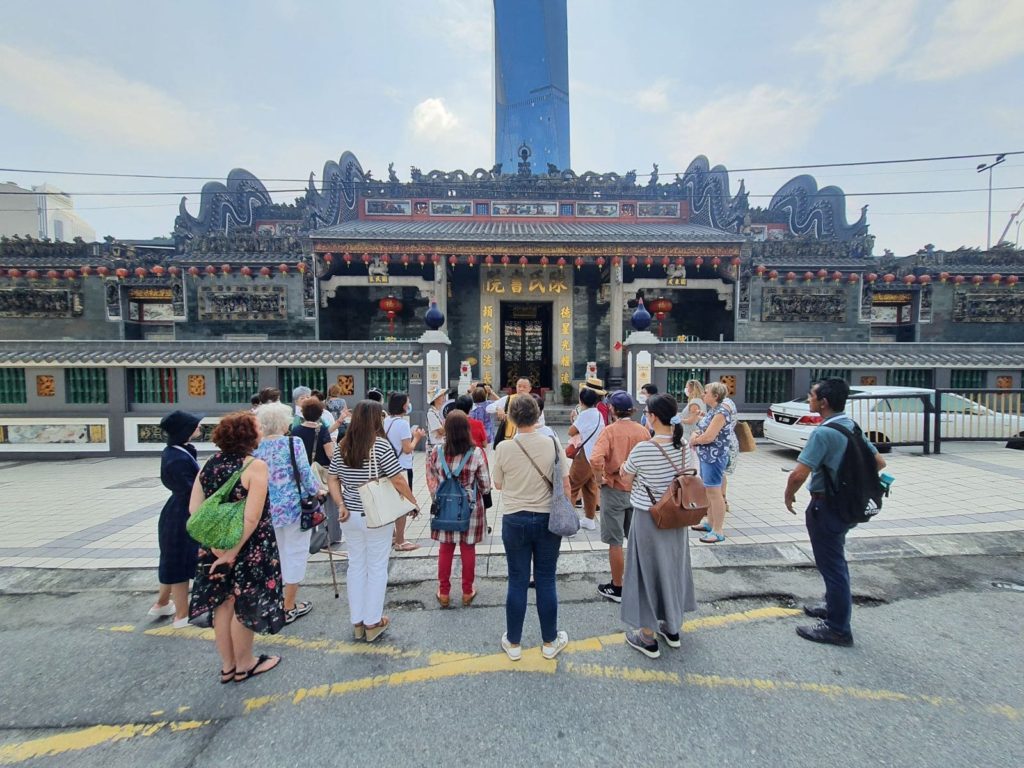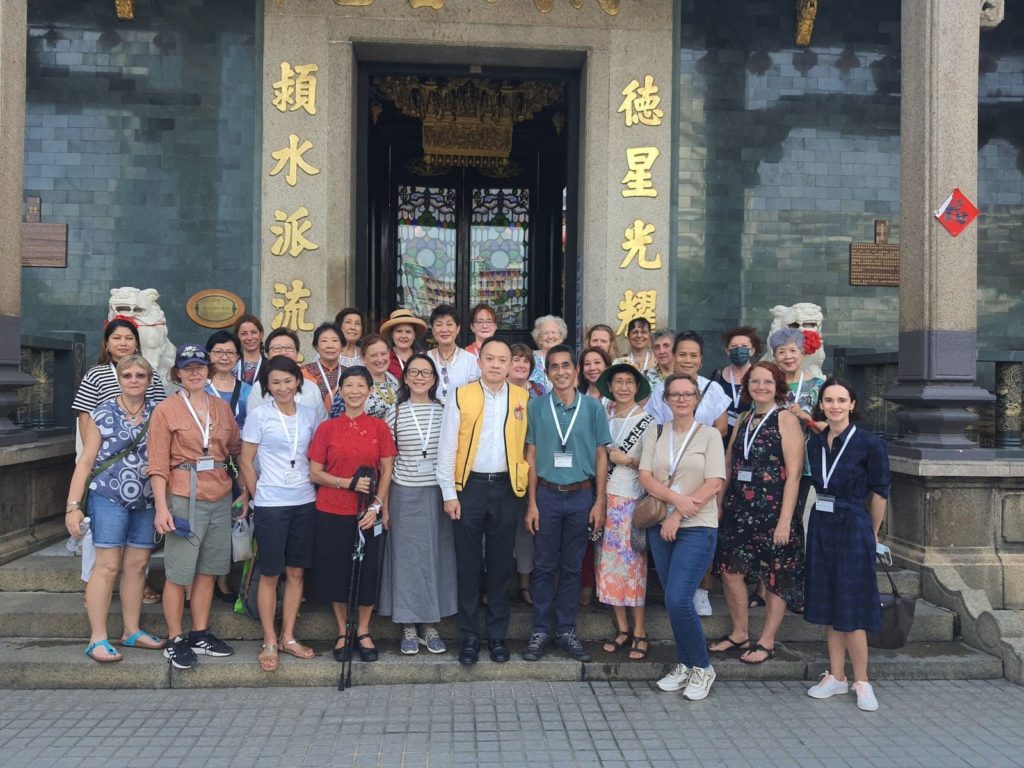
On Tue. May 24, I visited Chan She Shu Yuen Clan Association Kuala Lumpur and Selangor (CSSY) along with 30 enthusiastic MCG members. Mr. Chan Kok Keong, Vice President of CSSYKL, gave us the tour.
The CSSY building, a combination of ancestral hall and family temple, was completed in 1906 and was modelled after Chan She Shu Yuen (Chan Clan Temple) in Guanxi Guangzhou China. So, this building is dedicated to the same surname families, but please note that Chen, Chan, Tan, and more, are under the same surname, just different pronunciations!

This Ling Nan architectural style building features magnificent pottery figures, clay sculptures, wood and stone carvings, paintings and calligraphies. Many of them are along the roofline. When you visit there, please make sure to look up!
There are so many details and symbolisms, and I can only share a few of them here…. For instance, the corner of the roof is dotted with many pottery figurines of ancient Chinese drama personalities and mythological characters. These impressive sculptures are the work of master potter, Wu Qiyu. It was believed that the dramas performed by these figures would provide endless entertainment for the clan ancestors!
Wok Ears” at the centre of the gable is a typical feature for the Ling Nan style. There are clay flower baskets sculptures and a bat mouthing copper coins underneath. It symbolises “Blossoms of Prosperity, Abundance of Blessings”. The Carp fish tail was assembled at the end of the gable, signifying “vibrant energy of the community”, and “preventing fire” for Feng Shui.
In the square courtyard which occupies the heart of the whole building, the convergence of rainwater from all eaves is a symbol of wealth accumulated in the clan temple. One of my favourites was the dark blue pottery pen sculpture at the entrance wall. Of course, it symbolises that the great literatures started here!

Again, these are just some examples. Before the tour, I had never imagined that a small place like the CSSY building would offer a plentiful display of magnificent traditional Chinese art, literature and history. There was a lot of cultural discovery, especially for someone like me who is not very familiar with the Chinese culture. The whole group was very fascinated by Mr Chan’s explanations, and we wore him out by asking too many questions! We all enjoyed the visit very much. Tajuddin, thank you for organizing the wonderful visit!
Noriko Nishizawa
